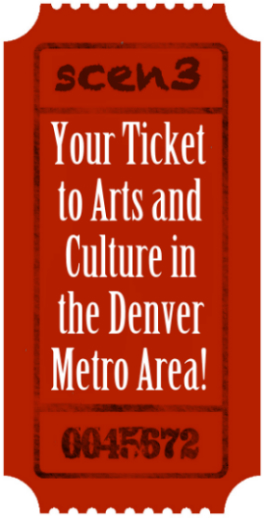Sacred Jazz with Ars Nova Singers
A review by Betsy Schwarm
The excellent Ars Nova Singers have long been one of the most adventurous ensembles in the region, with a repertoire ranging from the Renaissance to music of current composers. The ensemble’s October concerts this year brought out yet one more side of Ars Nova’s expressive voice: Sacred Jazz.
In his remarks to the audience, artistic director Thomas Edward Morgan referenced the famed sacred jazz concerts given in 1965 at San Francisco’s Grace Cathedral by Vince Guaraldi and Duke Ellington. He also commented upon the challenge of finding repertoire that is “both good jazz and good choral music.” Morgan’s selections for these programs (October 5 at St. John’s Episcopal Church in Boulder, and October 6 at Bethany Lutheran Church in Denver, which this reviewer attended) achieved that blend. They also set off his talented singers – as well as guest artists – in the best possible light.
The program opened with 16th century English composer John Sheppard’s Libera nos. Its serenely restrained character, setting seven contrasting voice parts against one another not only served to remind listeners of the ensemble’s more usual repertoire; it also provided an example against which a listener might compare (or even judge) the music that followed. Eric Banks’ Jâvdâni (Eternity) from 2003, setting texts by 13th century Persian writer Rumi, employed many of the same compositional techniques as had Sheppard, though with more varied harmonic colors: not modern per se, just not exactly Renaissance. The Ars Nova Singers dealt easily with the challenges of both works, steadily supporting even the longest sustained tones. Morgan deftly maintained balance between sections, so that more active lines did not necessarily overwhelm the equally
lovely, if less motion-filled parallel material.
The rest of the program’s first half offered a handful of short, a cappella sacred pieces, some derived from jazz standards and spirituals. Of particular note was Jalkeus’ arrangement of Ellington’s Come Sunday, pure-voiced mezzo-soprano Shannon Pennell comfortably and lyrically handling the tenderly bluesy solo honors as the full chorus intoned the title phrase, and, late in the piece, restated a few of her phrases more richly, but still in character to the solo lines. For Longaker and Nutting’s Hallelujah (I’m gonna let myself be lifted), finger-snapping and clapping served to reinforce the ebullient spiritual mood; Morgan even urged the audience to join in the action. More subtle, though even more artistically satisfying, were the duets carrying the verses between those bursts of exuberance. Shannon Pennell and Jim Gatch, Emma Vawter and Brian du Fresne, and Kira Blonsky and Kyle Shaw were all ideally matched; that they made eye contact not just with conductor Morgan and the audience, but also with each other, added nicely to the intimacy of the experience.
For the second half of the program, Ars Nova set aside its a cappella reputation to welcome soprano Kathryn Radakovich, as well as the jazz trio of pianist Scott Martin, bassist Mark Diamond, and drummer Russ Meissner. Usually, Ars Nova draws vocal soloists from its own ranks, but English composer Will Todd’s Mass in Blue required more specialist talents, and these Radakovich had in abundance. Written in 2003 for the Hertfordshire Chorus, the work has become – deservedly – Todd’s greatest hit. In his opening remarks, conductor Morgan advised listeners “it’s not a [church] service: feel free to clap if you want.”
Indeed, there was plenty of applause, both during and after the work. In the care of Ars Nova, the ancient mass text earned moods of plaintive nature, as well as exuberance, and, in the brilliant Gloria, a high-spirited, hitting-the-road kind of energy. The gentlemen of the instrumental trio were no less impressive in their undercurrents of supporting textures than they were in their spotlight introductions to the various movements. The spacious Credo placed particular focus upon Radakovich. In places, Todd set the soloist against the instrumental trio; at others, the choral ensemble breaks in, as if remarking upon her statements of belief. Radakovich is a specialist in and instructor of jazz vocal techniques. However, the deft manner in which the Ars Nova Singers took to the unique rhythms and harmonies of jazz was also
impressive. One hopes the ensemble will add Todd’s Mass in Blue to its already impressive discography.
In all, the Ars Nova Singers program proved that the art of writing for voices – with or without instruments – may change in style, but not in essential features. Singing in simple harmony is lovely, but enlivening it in places with more elaborate textures for the sake of contrast is better yet, and that is something one can do from a Renaissance viewpoint or a 21st century one. The only requirement is a set of performers open-minded enough to adapt their technique to a new approach, as well as an audience of equal curiosity. Ars Nova excels at both sides of that equation.













